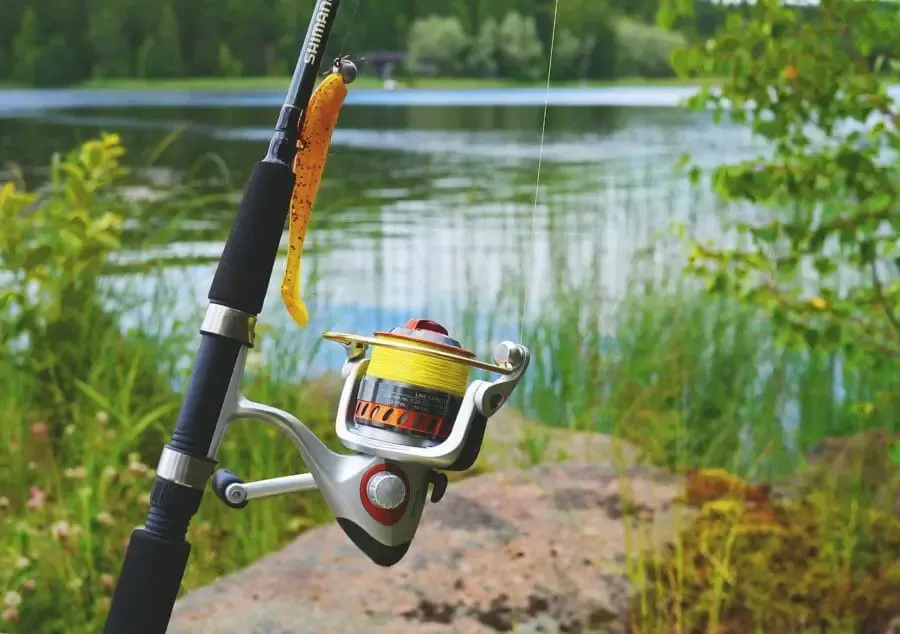As one of the more active fish in the sea, the bluefish has been a major component of the ecosystem. Not only is the bluefish consumed by humans but it remains a popular food among tuna, swordfish and mako sharks. When they are not actively being hunted, they are hunting. The bluefish, also known as the marine piranha or chopper, is known to eat almost anything it can find. Hence, the reason why you frequently catch bluefish while fishing for another species of fish.
The bluefish has a distinguished symmetrical look, with silvery sides and a blue finish on both the front and the back. With sharp, prominent teeth, the bluefish is able to aggressively hunt other fish for food. While some small bluefish, known as blue snappers, can be as small as 6 inches, the larger adult bluefish can grow upwards of 30 inches and weight more than 20 pounds. Typically, the blue snappers live and feed in canals and bays until they mature into adults and migrate offshore.
2020 – New York State Fishing Regulation for Bluefish
- Season: All year
- Minimum size: No size limit for first ten fish, 12 inches for the next five
- Limit fifteen, no more than ten of which shall be less than 12 inches
When it comes to fishing, it is important to know that bluefish do swim together. Usually when you see one, more bluefish must be close. They are known as an exciting fish to catch as they put up a great fight and are relatively easy to hook. It is a perfect fish to catch with the family! While the bluefish is very abundant in today’s waters, roughly 30 years ago, they were not. General concerns were raised about bluefish being overfished, since they served a dual purpose as both a fish to eat as well as bait for big-time sport fishing.
Where do you fish for Bluefish?
The simple answer is anywhere along the east coast from Maine to Florida. They spawn several times in both the spring and summer. They tend to chase squid and other small baitfish. Bluefish can be caught when fishing for bottom fish (like fluke or flounder) but can also be caught towards the surface of the water. To attract a bluefish to your fishing spot, I recommend chumming with chunks of fish. This method will lure the hungry bluefish to your area, regardless of depth. Bluefish are also popular through the surf zone and will chase bait along the shore. Often, blue snappers are a popular catch off of both docks and piers.
How to catch a Bluefish
One of the simplest and quickest ways to attract a bluefish is through the use of live bait. I have had the best success fishing with live peanut bunker between the size of 2-3 inches. When hooking your bait for bluefish, I advise hooking any bait fish from its tail or the top of its back. The reason behind this method is that bluefish tend to bait the tail first. Given the sharpness and power behind a bluefish, you will often be the victim of loosing your bait. Don’t let that discourage you and make sure you have plenty of bait to fish with. The large jaws of the bluefish allow them to consume many different types of larger baits that wouldn’t normally work for a fish of a similar size. They will feed on almost anything that they can catch.

The 3 Best Lures for Bluefish
- Storm Swim Shad Bluefish Jig
I find these ultra-realistic shad baits to be extremely successful in attracting bluefish. These jigs normally weight around 1.6 ounces and are very durable given the power of the bluefish bite. I discovered this jig to be successful for bluefish when I was actually fishing for striped bass. The jig has produced successful catches for both Bluefish as well as striped bass.
- Diamond Jig Bluefish Lure
One of the easiest decisions you will have to make when it comes to buying a fishing lure is the Diamond Jig just because of the wide variety of fish that it can help catch. This method requires you to cast, let the weight on the jig sink to the bottom and then reel it in with pace. Continuing this pattern while drifting, has been a successful method for many types of fish, especially the bluefish.
- Rock Candy Umbrella Rig for Striped Bass and Bluefish
Usually when you bring out the Umbrella Rigs, you are probably going for a bigger fish than just a bluefish. But more often than not, you will end up catching a bluefish during your day fishing with this rig. The Umbrella Rig is best when trolling and it is just an important to make sure you apply the appropriate weight to the Umbrella Rig so it sinks to your desired depth. Another tip from personal experience is to be sure to use swivels to avoid having your line tangle or knot when you are trolling. The frustrating part with this rig is that smaller bluefish will tend to only bite the bottom of the swim shad. Since these rigs are not cheap, it can be annoying to replace shads, hooks and swivels. Make sure you bring extra for your trip. Usually the larger Umbrella Rigs with stronger swim shad help avoid the smaller bluefish from damaging your rig.



